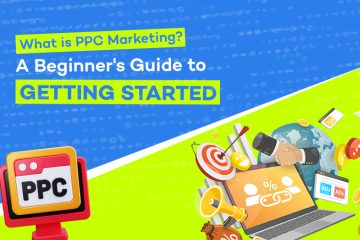In 2025, having a presence on social media is not enough. To stay visible, engage with your audience, and grow online, your business needs a strong Social Media Optimization (SMO) strategy. Social media platforms are always evolving, and so should your approach.
Whether you’re a growing brand or working with a social media marketing agency in Delhi, having a clear SMO checklist helps ensure you’re doing everything necessary to compete and succeed.
This blog lays out a step-by-step checklist for optimizing your social media channels effectively. From profile setup to content strategy and performance tracking, this guide covers everything you need to thrive in 2025.
What is Social Media Optimization?
Social Media Optimization is the process of improving your social media accounts to increase visibility, engagement, and traffic. It involves tweaking your profile, posts, and strategies so that your brand performs better across platforms like Instagram, LinkedIn, Facebook, X (formerly Twitter), and YouTube.
The aim of SMO is to strengthen brand presence, reach new audiences, generate leads and conversions, and support SEO and overall digital marketing goals.
Why SMO Matters More in 2025
With attention spans decreasing and algorithms changing frequently, SMO has become a must-do rather than a nice-to-have. Optimized content is more likely to reach the right audience, attract better engagement, and enhance overall campaign effectiveness across platforms.
Social Media Optimization Checklist for 2025
Set Clear Goals
Before you begin optimizing, define what you want to achieve from social media. Your goal may be to boost website traffic, improve brand recognition, increase leads, or grow community engagement. These objectives will shape your content and overall strategy.
Audit Your Existing Social Media Profiles
Conduct a full review of your current social media presence. Check if your bios, links, visuals, and post styles are consistent with your brand. Identify what’s working, what isn’t, and remove outdated content. Also, compare competitor profiles to find opportunities for improvement.
Optimize Your Profile for Each Platform
Update your profile image, bio, and contact details to reflect your current brand. Use a clean logo, write a keyword-rich bio, and insert relevant CTAs and working links. Include highlights for Instagram, service tabs on Facebook, and featured content on LinkedIn for a complete profile setup.
Create a Strong Content Strategy
Develop a content plan with defined themes like tutorials, behind-the-scenes, product showcases, and testimonials. Strategize around your audience’s interests and behavior to ensure your posts provide consistent value. Review top-performing formats and competitor strategies for inspiration.
Post Consistently
Posting regularly keeps your brand visible and builds trust. Decide how often to post on each platform and stick to that schedule. Use scheduling tools to keep your feed active even during busy periods. Consistency helps train platform algorithms to prioritize your content.
Use Platform-Specific Features
Take advantage of tools that each platform offers. Instagram Reels, LinkedIn newsletters, Facebook groups, and YouTube Shorts are designed to boost visibility and engagement when used strategically. Each feature can serve a specific audience touchpoint, from education to entertainment.
Focus on Visual Branding
Use a consistent visual style that reflects your brand’s personality. Stick to specific color schemes, fonts, and formats. Uniform design makes your posts instantly recognizable and visually appealing. Design templates using tools like Canva or Adobe Express to speed up content creation.
Write Better Captions
Captions should sound natural and reflect your brand voice. They should give context, encourage interaction, or guide the viewer to take a specific action. A relatable story, a problem-solution statement, or a question at the end can spark conversation and improve reach.
Use Hashtags Wisely
Hashtags improve discoverability but only when they are relevant. Use a mix of trending, niche, and branded hashtags to reach targeted users. Avoid overloading each post with too many tags. Research hashtags using tools like Hashtagify or Meta’s own suggestions.
Encourage Engagement
Make your posts interactive to start real conversations. Ask open-ended questions, use polls or quizzes, and respond to comments. People like engaging with brands that engage back. Even resharing user comments in stories can help build a deeper connection.
Leverage Stories and Reels
Stories and reels have become essential for staying on top of users’ feeds. Use them to share daily updates, client feedback, product tips, or event highlights in an informal, creative way. Use music, countdowns, polls, and reply stickers to keep viewers interacting.
Track and Analyze Your Performance
Check the numbers behind your content to understand what works. Track reach, impressions, shares, and saves regularly to adjust your strategy. Use built-in tools or third-party platforms to make data-driven decisions. Track performance monthly and update your strategy accordingly.
Use Social Listening
Social listening helps you monitor what people are saying about your brand. Track keywords, mentions, and comments to understand public sentiment, get feedback, and join relevant conversations. Spotting issues early helps prevent PR risks and opens up timely campaign opportunities.
Collaborate with Micro and Nano Influencers
Partnering with smaller influencers can give you authentic reach. These creators have close-knit communities and often drive more engagement than celebrities. Choose influencers who align with your brand values and have a genuine voice. Micro-influencer collaborations often deliver higher ROI.
Run Social Ads for Boosting Key Posts
Organic reach has limits, so consider boosting high-performing posts. Social ads help you target new users, retarget past visitors, and test multiple creatives to refine your campaigns. A well-targeted campaign can also amplify seasonal offers and product launches.
Focus on Mobile Experience
Most people view social content on their phones, so your posts must be mobile-friendly. Use vertical formats, readable fonts, and clean layouts to make your visuals easy to consume on smaller screens. Test mobile previews before posting to ensure quality delivery.
Avoid Common SMO Mistakes
Many brands fail at SMO due to avoidable mistakes. Posting without a plan, ignoring analytics, overusing hashtags, or being inconsistent are some of the most common pitfalls. Avoid copying competitors blindly—every audience behaves differently. Instead, review, test, and adapt your content continuously.
Build and Maintain a Content Calendar
A calendar helps you plan content in advance around events, campaigns, and audience interest spikes. It keeps your team aligned and your brand consistent across channels. Include space for trends, festive campaigns, and influencer promotions to stay relevant.
Use Calls-to-Action (CTAs) Effectively
Your captions and creatives should guide users on what to do next—whether that’s visiting your site, saving a post, commenting their opinion, or DMing for a quote. Effective CTAs can increase engagement and conversion without being pushy.
Final Thoughts
Social Media Optimization is no longer optional. In 2025, it’s a key part of your digital success. From improving visibility to building relationships and driving leads, a strong SMO strategy helps you grow faster and smarter.
Whether you manage your brand in-house or partner with a digital marketing agency in Delhi, following this checklist will ensure your social media presence is impactful and strategic.
If you’re looking to scale with confidence, partnering with a social media marketing agency in Delhi like DI Infotech can help you build customized, high-performing campaigns designed to grow your business. With expert insight and consistent execution, you can turn your social profiles into powerful marketing channels.
Use this checklist as your foundation, keep adapting to trends, and stay focused on delivering value to your audience. That’s how brands win on social in 2025.





0 Comments